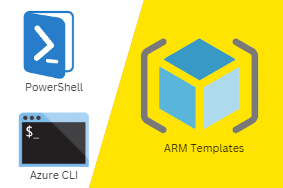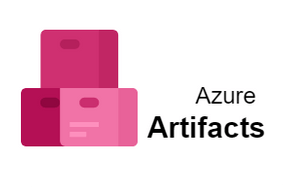Azure Stack simplifies cloud infrastructure and enables you to deliver Azure services from your own datacenter. It’s flexible and compatible with your existing hardware and software investments, so you can make the cloud even more accessible. Here are 10 things you need to know about Azure Stack to get started with it.
1) It’s Different from Other IaaS
The coolest thing is that it’s different from other IaaS, because of its hybrid nature. This allows you to manage your cloud infrastructure in a private or public configuration and even extend it into Microsoft’s Azure. It also means that you can provision more resources within your existing environment, making it easier to scale. Because of these reasons, although there are some similarities between other IaaS services, such as Amazon Web Services (AWS) and Microsoft’s own Azure, ultimately they are quite different.
2) The Essentials You Will Use
This solution, built from multiple components, is available in hybrid mode. Hybrid mode gives you flexibility, using existing on-premises applications and resources while still accessing cloud services. The common pieces of hybrid mode are a controller (to provide compute resources) and a gateway (to provide network connectivity). Each gateway also acts as an edge router in front of your on-premises network. By connecting both to your on-premises infrastructure, you can use traditional security features like firewalls and access control lists (ACLs). Azure Resource Manager : This system helps provision cloud resources based on code instead of individual actions—meaning fewer manual steps are required when configuring a new application.
3) Developer Oriented
If you’re an IT admin or engineer, much of your daily workload is already focused on implementing and running Microsoft technologies. Azure Stack is not for you. At least, not yet. As mentioned above, it’s a developer platform first and foremost, which means most of your day-to-day activities will be around code and services management. As such, here are 10 things you need to know if you’re working with Azure Stack
4) When To Deploy?
If you’re a Microsoft shop, it probably goes without saying that you want to move over to Azure Stack as soon as possible. In fact, some features in Windows Server 2016 and System Center 2016 require customers use at least one node of Azure Stack. Not only are they prerequisites for other features, but organizations that do not implement at least one node will be missing out on new capabilities—even if they stick with Hyper-V instead of switching to Microsoft’s managed cloud services. For now, however, organizations must still migrate workloads from Hyper-V clusters running on previous versions of Windows Server and System Center before they can move forward with Azure Stack deployments.
5) Choosing the Right Edition
When it comes to deciding which edition of Azure Stack is right for your organization, you need to consider a few factors. First and foremost, what applications will you be using with your stack? If you’re simply hosting internal web applications and file shares, then Microsoft’s free Web App Gallery might offer more than enough functionality. But if you’re planning on running mission-critical workloads—either as part of a hybrid or public cloud strategy—you need a bit more enterprise-grade support. This is where Microsoft’s Enterprise Cloud Suite (ECS) and similar premium products come into play.
6) IaaS Like a Pro
If you’re not familiar with IaaS, it stands for Infrastructure as a Service. Unlike PaaS and SaaS, IaaS is an infrastructural approach in which users get complete control over their applications’ environment (that is, servers). This helps IT teams carry out tasks like scaling, upgrading and managing without relying on a third-party provider. And with IaaS comes greater flexibility than those other two services—and that could mean big savings for your business. Cloud monitoring tools can provide insight into IaaS usage. However, if an organization doesn’t have any public-cloud experience or confidence in existing resources, considering private-cloud implementation first might be more practical.
7) Scalability and Reliability
When you deploy an on-premises virtual machine (VM) today, it can be difficult to predict how much demand that VM will receive. While in theory, a VM can always be scaled out by adding more processors and memory, in practice, there are only so many VMs that a single host server can handle. When you add up potential performance bottlenecks like storage I/O or networking resources, it’s possible for a single physical host to run into limitations. For example, your application might crash due to database connectivity problems if CPU utilization is too high.
8) Cost Efficient and Easy to Manage
There’s no doubt that cloud computing has transformed IT infrastructure. But many enterprises have struggled with some of its practical realities, including application compatibility, management and security concerns, and vendor lock-in. Microsoft intends to change all that with Azure Stack—Microsoft’s new approach for delivering a cloud experience comparable to its public services from behind your organization’s firewall. There are several things you need to know about Azure Stack before your organization decides whether it is right for you. Here are 10 facts you should understand before making your decision
9) Hybrid Cloud Option Available
Microsoft has been integrating its own cloud software with VMware’s enterprise software for some time now. By offering a hybrid solution, customers can choose what works best for them. The integration of Microsoft and VMware allows businesses that are using either set of products to have seamless transitions between on-premises and cloud resources. With an all-in-one option like Azure Stack, they can continue to access everything in one place while still having total control over their applications and data. This gives businesses easy and immediate access to infrastructure services like IaaS, PaaS, high availability and disaster recovery—all within a cost effective package.
10) Where Is This Headed?
Microsoft has an ecosystem of products, including Windows Server, System Center, SQL Server and other services. With all these tools and more, it’s sometimes hard to figure out where they are headed. Is Microsoft making a shift? The answer is yes. With some new additions in 2016 that include SQL Server on Linux and Docker, Microsoft has made changes to its offerings so we can better deliver what customers need. Let’s take a look at 10 things you need to know about Microsoft’s future with its cloud platform: Azure Stack. What Is Azure Stack?: Azure Stack is a version of Microsoft’s public cloud application development model that includes its own hardware.



0 Comments